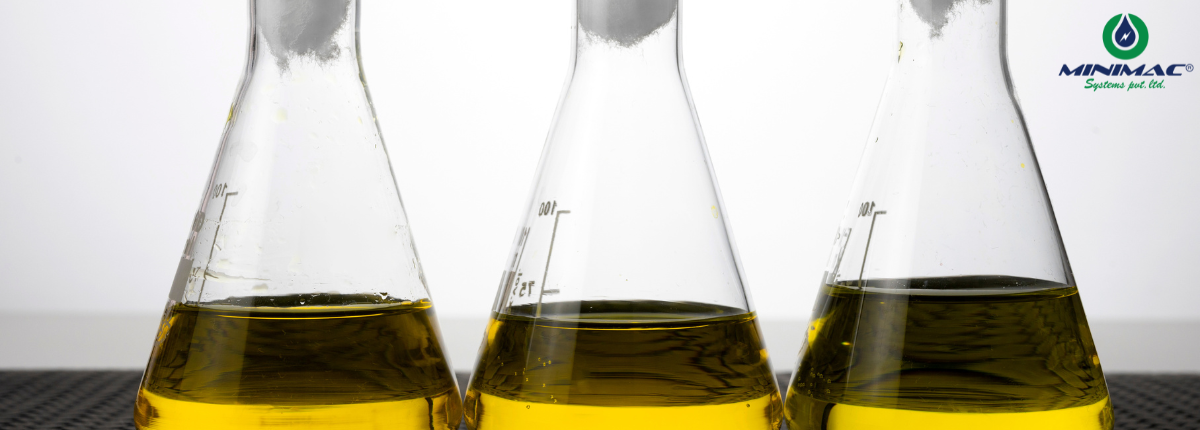Oil Viscosity Basics: Understanding the Heart of Lubrication
Introduction
Well, when it comes to lube, oil viscosity is everything. The resistance of a fluid to flow is known as its viscosity and will influence the ability to lubricate, protect, and cool machinery. In this article, we will explore the basics of oil viscosity, its measurement, its application, and the factors that influence it. Armed with a good understanding of these fundamentals, you can make better choices about which equipment to lubricate and how to maintain it in an industrial setting.

What is the Viscosity of Oil?
Viscosity is the measure of the internal friction of the fluid, or how gunky it is. In oils, it specifies the flow of the oil at an established temperature. Some oils are called high-viscosity oils because they have a high relative resistance to flow, and others are low-viscosity oils, which are thin and can flow easily. This property is critical to proper machinery lubrication because it influences oil film formation, lubrication efficiency, and wear protection of moving parts.
How to Measure Oil Viscosity
Viscometers are used to determine the viscosity of oil. There are two common methods:
- Kinematic Viscosity: This checks the flow of the oil under the effect of gravity. Measured in centistokes (cSt), it is the time taken for a given volume of oil to pass through a calibrated opening, at an accurately defined temperature.
- Corrosion: Moisture present in oil speeds up the rusting of metal parts. Eventually, even a minimal exposure to water can result in a high grade of corrosion that will eventually weaken the components of the mechanical components themselves.
- Dynamic Viscosity: It measures the oil's resistance against flow under shear. The viscosity of the oil is expressed in units Pascal-seconds and is determined using a rotational viscometer by applying a torque to the oil.
Oil temperature has a major effect on oil viscosity, higher temperatures will generally reduce viscosity.
LUBRICANT VISCOSITY INDEX
The VI is a numerical measure of the change in viscosity of a lubricant with temperature. High VI indicates that the oil has a smaller change in viscosity over a range of temperatures, which is beneficial for use under varying temperature conditions. On the contrary, a low VI means that the variation in viscosity is pronounced, which may not be the best case for some applications. Higher VI oils tend to be more desirable and perform better under changing conditions.
For More Information About - Read Now
Viscosity of Low Viscosity Oil and High Viscosity Oil
Whether to use oils of low or high viscosity will depend largely on the intended application and operating conditions.
- Low Viscosity Oils: These types of oils are typically used for applications that require fast movement and heat transfer, like automotive engines or hydraulic systems. At the same time, they cut aerodynamic drag, increase fuel economy, and improve cold-start emissions.
- Viscosois: High Viscosity Oils: Better for high-load, high-temperature applications with higher film strength and wear protection. These are frequently utilized in heavy industry and large machinery.
The right viscosity ensures the optimal performance and durability of machines.
Hydraulic oil viscosity is ideal
Hydraulic oil should have an optimal viscosity of around 32–46 cSt at 40°C, which is sufficient for lubrication and hydraulic oil circulation. This specific viscosity requirement will differ with the type of hydraulic system, operating temperature and load conditions? Choosing the right viscosity helps hydraulic components work and prevents them from overheating and wear.
Oil Viscosity Temperature Relationship
Oil viscosity is significantly affected by temperature. With
increasing temperature, the viscosity of an oil normally reduces
increasing mobility. This action is necessary for the proper
circulation of oil through the moving parts. On the other hand,
cooler temperatures raise viscosity and turn oil into a goo with
no flow, particularly at cold start-ups.
The temperature-viscosity relationship is important to understand
as the oil that will be selected for the operating condition will
allow the smooth running of the machine in all temperatures.
Role of Oil Viscosity in Machines
The importance of oil viscosity in the operation of machinery is evident in the following factors:
- Lubrication: Correct viscosity allows oil to create a film between moving parts and minimize friction and wear.
- Heat Dissipation: Suitable viscosity oils can carry heat away from internal engine components, helping to avoid overheating.
- Energy Efficiency: The proper viscosity reduces drag, making the machinery more efficient, which can save on energy bills.
- Extended Component Life: Keeping viscosity within limits keeps components from having to work too hard, reducing their life cycle.
Oil viscosity is one of the most important physical properties relevant for keeping machinery behavior under control, moreover, by means of regular physical examinations of the oil in use.
Viscosity & Kinematic Viscosity
Viscosity refers to the internal friction between the particles of the fluid that are in motion. Kinematic Viscosity takes into account the density of the fluid and, therefore, is a better measure of how we expect the fluid to behave in the real world. Viscosity and kinematic viscosity play an important role in the selection of the lubricant for various machines.
What is Viscosity and Viscosity Index
Viscosity is the test: the amount of pull it offers against a thin sheet of passing fluid, while the Viscosity Index (VI) is the observation: how much does that viscosity change with passing temperature. A higher VI means that the oil will hold its viscosity over a wider range of temperatures, which is good for areas with more temperature swings. Both concepts are important because they help you choose the right lubricant for the specific application.
Conclusion
Oil viscosity is one of the most basic parameters affecting
lubricant performance and reliability in machines. Knowledge about
viscosity, its measurement and importance in various applications
leads us to take the right decisions regarding the equipment to
ensure an efficient and long life of the equipment. Well,
appropriate viscosity, taking into account the operating
conditions as well as the temperature, will guarantee perfect
functioning and durability of your machinery.
Learn more about our services and industry insights by visiting
our official LinkedIn page:
Minimac Systems




